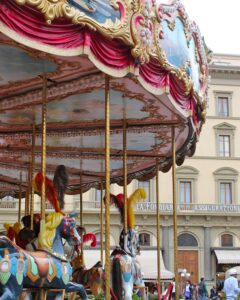Last Updated on November 22, 2025 by Emma Fajcz | Published: June 1, 2022
Would a trip to Florence really be complete without a stop at the Uffizi Museum? Probably not! This is one of the most visited museums in Europe, known for the great works of art it houses. But if you head there unprepared, it might feel a little overwhelming. Luckily, we’ve put together an Uffizi Gallery guide to help you prepare and navigate your visit. Read on to find out more!
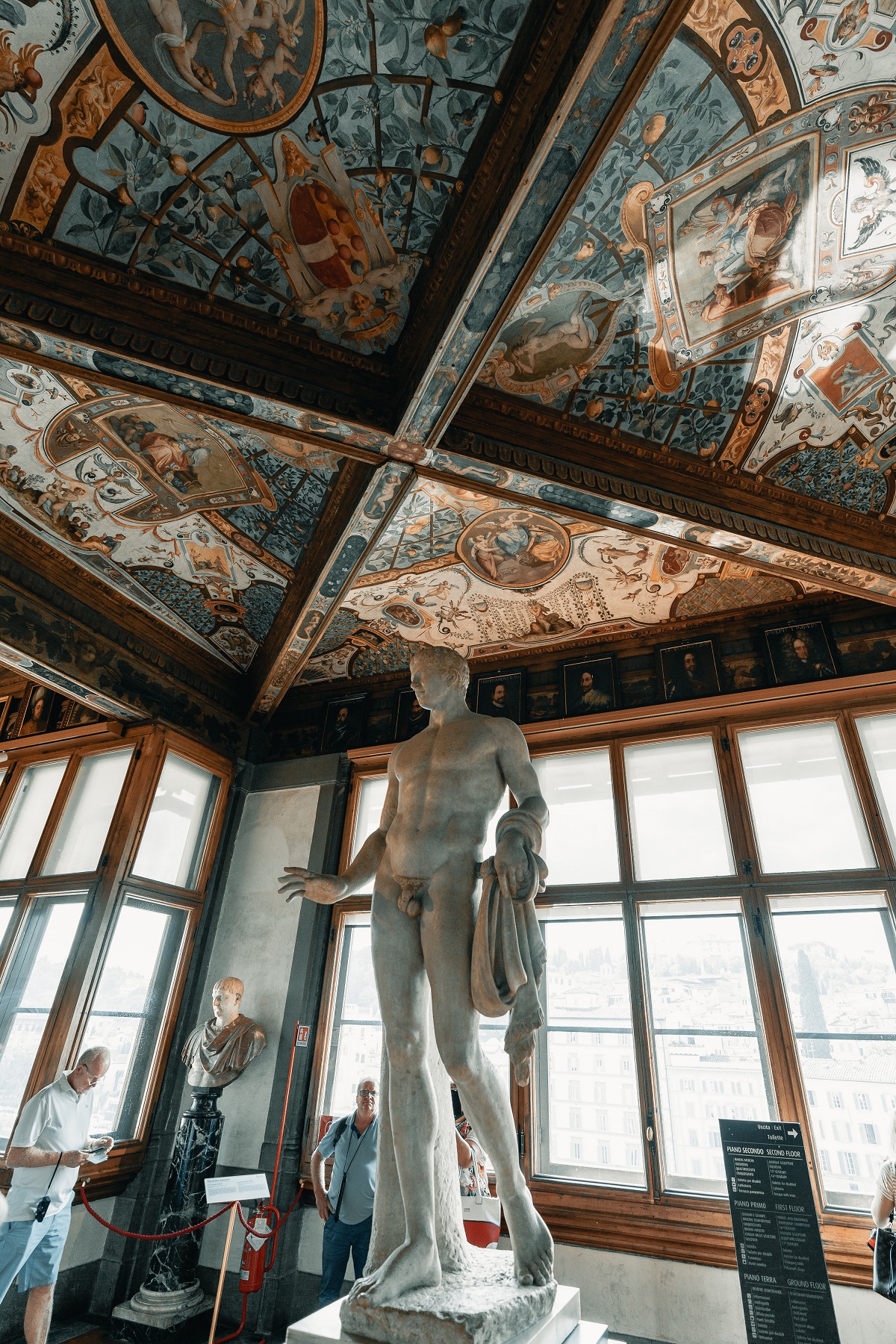
The History of the Uffizi
One of the most visited museums in the world, the Uffizi has a long history in Florence, but it wasn’t always a museum. Uffizi in Italian actually means “the offices,” which is exactly where the story of this great museum began.
The building was built for the Medici family by Giorgio Vasari in 1580, with its original purpose being to offer administrative offices for the magistrates of Florence. As the building grew, it also housed the official State Archive or Archivio dello Stato.
However, even from the beginning, there was a hall intended for showing off great works of art. In fact, the Medici used the main hall to showcase some of their most prized masterpieces and jewels, a way to show off their own wealth and the power of Florence.
Over the years, the building transformed to be primarily a storage and showcasing of the Medici’s collection, expanding as the collection grew into the 18th century.
It officially opened to the public in 1785, after the Medici left it to the city of Florence. Then, in 1865, it was formalized as an official city museum.
Over the centuries the collection has grown to house some of the best pieces of medieval, renaissance, and baroque history. Let’s check out some of the works you won’t want to miss!
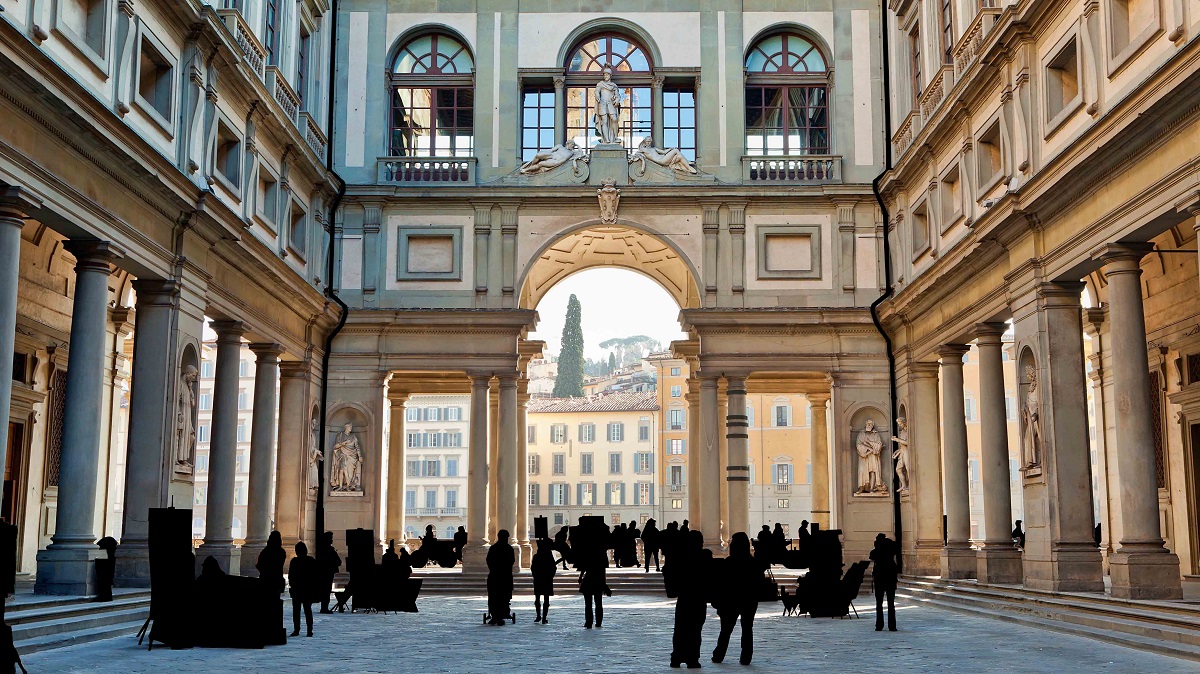
Uffizi Gallery Guide: The Highlights
The Birth of Venus by Sandro Botticelli
Chances are you’ve heard of this one already. One of the museum’s most famous pieces, it is a key stop on your Uffizi tour. This painting has become so famous that it’s one of the most reproduced artworks. But don’t think seeing it in print hundreds of times takes away from the original piece. In fact, you’ll be in awe of just how large the work is. Standing in front of Botticelli’s masterpiece, visitors are struck by a painting that is nearly three meters (10 feet) wide!

Portrait of Pope Leo X with Two Cardinals by Raphael
No visit to the Uffizi is complete without catching a glimpse of one of Italy’s great artists, Raphael. This on its own is a bit of an understated work, a portrait that was commissioned by the Pope himself. He was in fact a member of the Medici family, which led to much of his collection being included in the Uffizi Gallery.
But, why is a portrait of a pope so important? Throughout much of history, art was always a picture of the idealized. However, with this piece, Raphael stepped out of the idealized world of art and painting. This realistic portrait – including the Pope’s facial flaws – reflects a new reality.
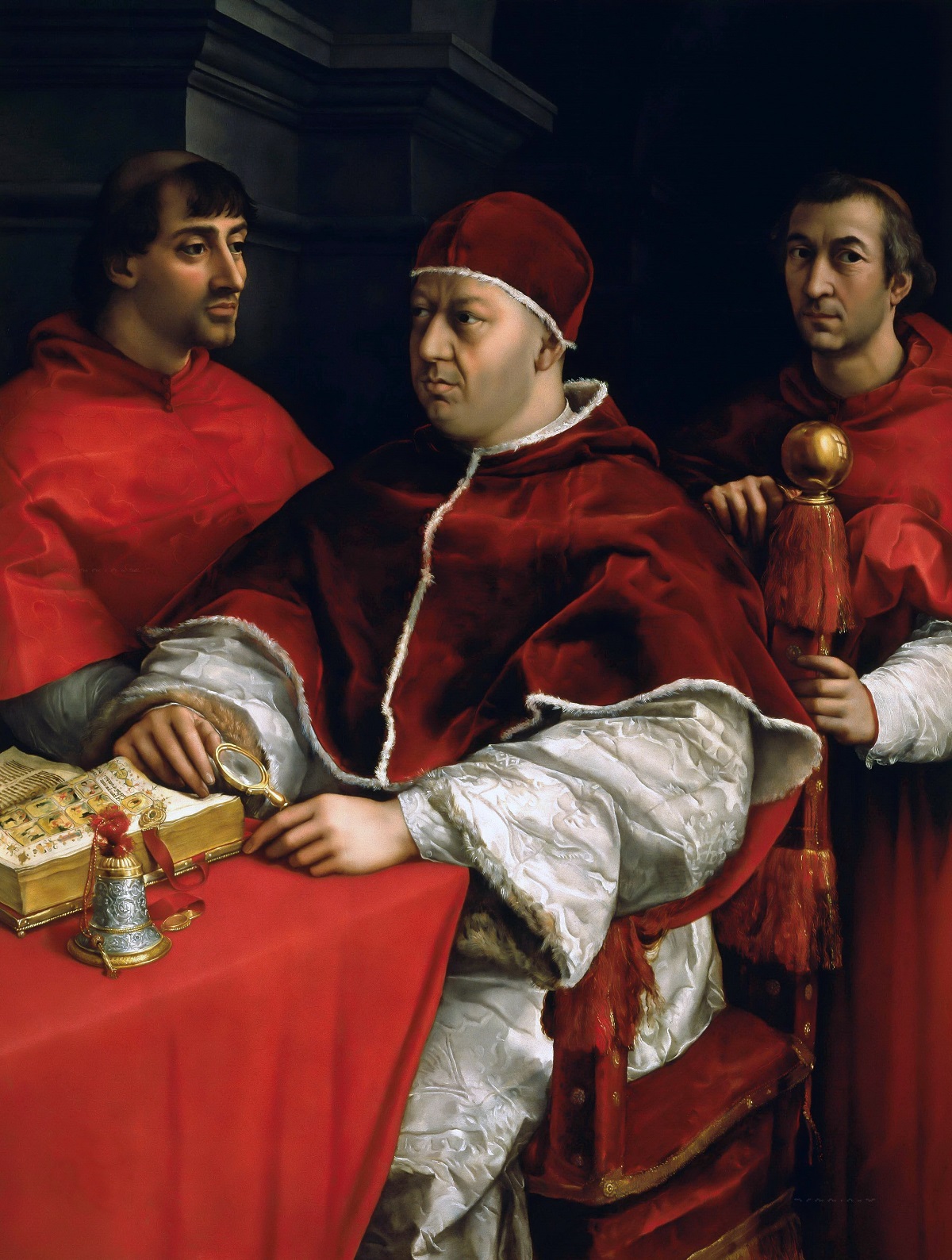
Laocoön and His Sons by Baccio Bandinelli
If you’ve already passed through Rome and the Vatican Museums, this sculpture may look familiar to you. The original, breathtaking sculpture is an ancient one unearthed in the early 1500s. That is what you see in Rome.
Instead, the Uffizi has a marble copy, complete with the artist’s own personal touch. Bandinelli took inspiration from the ancient sculpture for a recreation that was once a Papal gift to King Francis I.
The Renaissance was all about taking inspiration from an ancient world but reworking it for a contemporary public; a rebirth of the old into a new artistic world. Laocoön and His Sons is a perfect example of this time period.

Annunciation by Leonardo da Vinci and Andrea del Verrocchio
Da Vinci may be famous for the Mona Lisa, but the truth is he was more of an inventor than a painter. This makes the Uffizi one of the rare museums to own one of his paintings.
In fact, this is one of Da Vinci’s earliest paintings, made while he was still studying side-by-side with his master, Andrea del Verrocchio.

Medusa by Caravaggio
Another Italian great, Caravaggio’s works are truly unique and stand out for their bold, raw scenes. The Medusa is one of Uffizi’s most well-known pieces.
This piece is particularly interesting because rather than being shown mounted on canvas or a fresco, it is found on a shield. This is a tribute to the original story of Medusa, where Perseus used his shield to reflect Medusa’s stare, therefore defeating her. The shield is a great way of highlighting the story behind the masterpiece, bringing the artwork into a whole new dimension of narration.
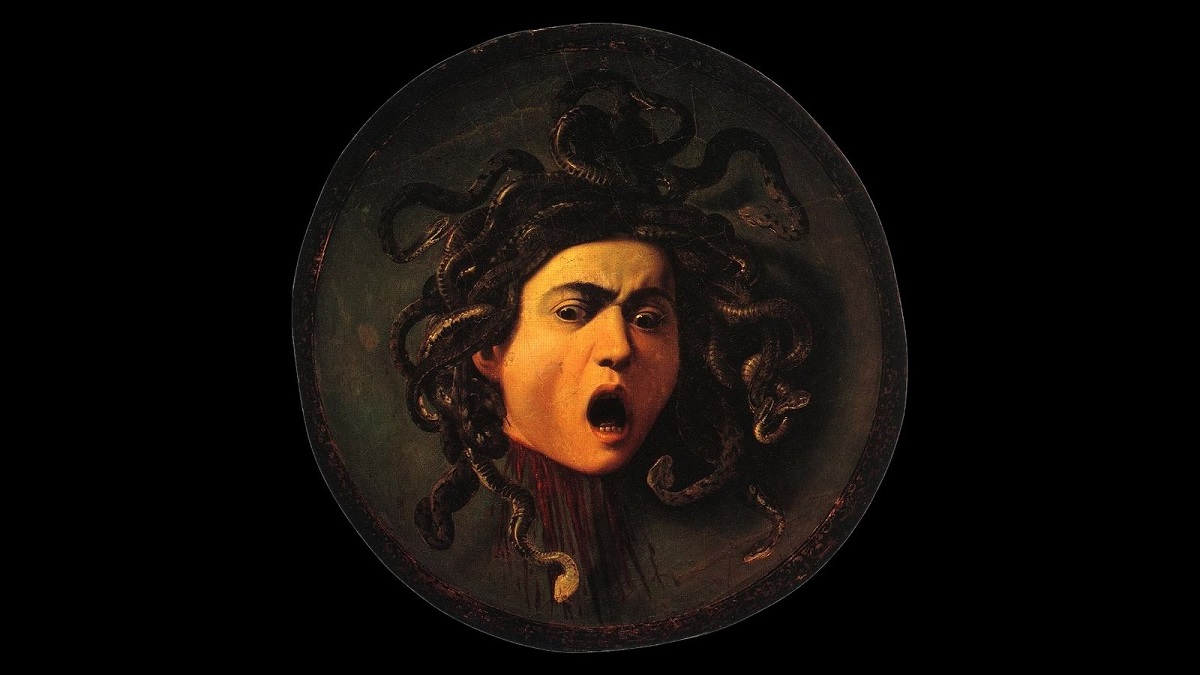
Doni Tondo by Michelangelo
This depiction of the Holy Family – Joseph, Mary, and the young Christ – is the only panel painting by Michelangelo still in existence. While we know many of Michelangelo’s frescos and sculptures, this shows us he was truly a master in any medium he chose.
It also shows his mastery of depicting the human body in many different positions, and his work using draped fabrics to highlight the angles of the body. This is something we later see in his most famous work, The Sistine Chapel.
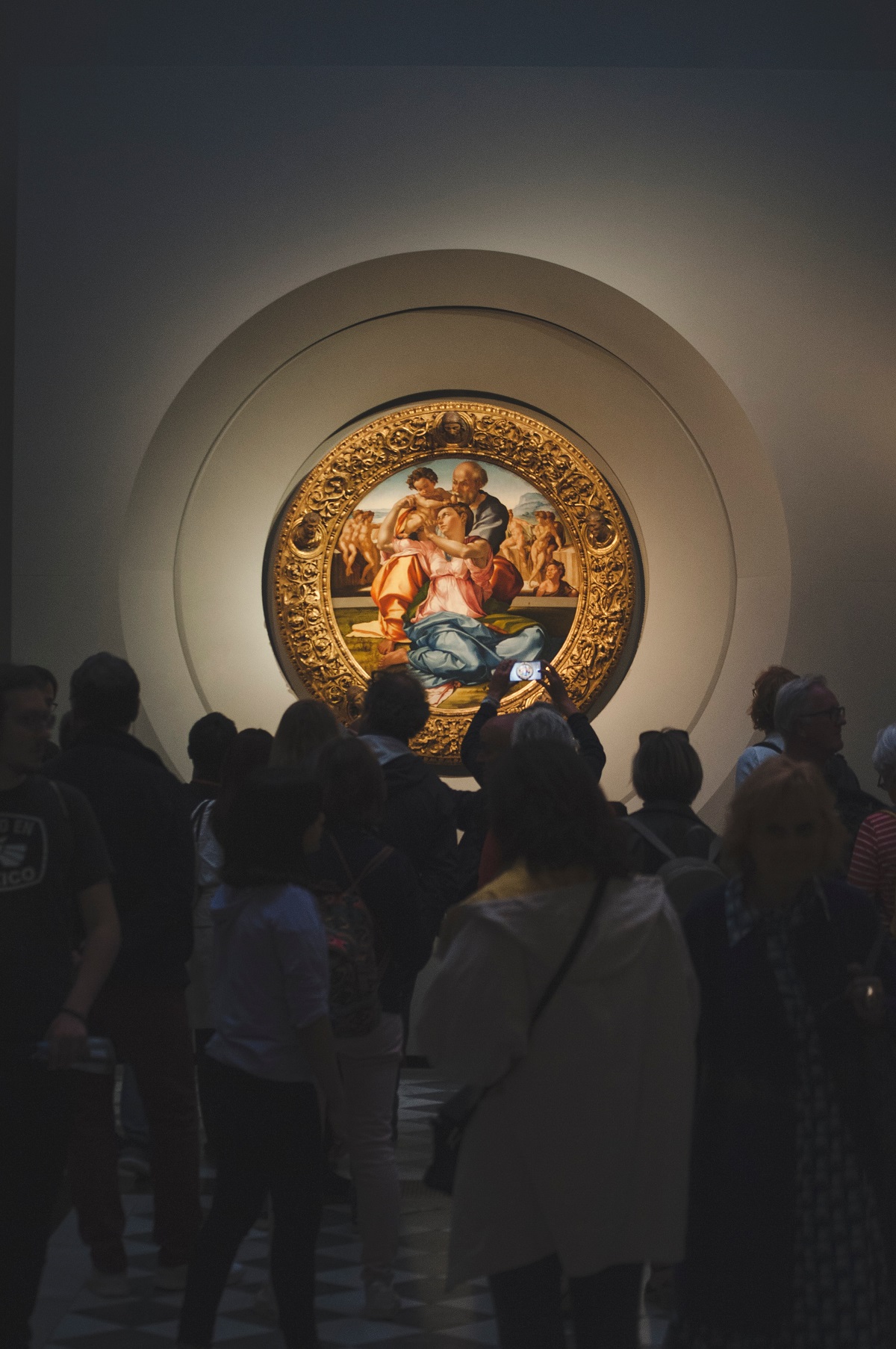
Venus of Urbino by Titian
The Uffizi does an amazing job at showcasing the best of Italy’s great artists. Here we see another masterpiece, a famous nude by Titian.
With a strong female figure who looks straight to the viewer, the Venus of Urbino has been called one of the most alluring paintings in art history.
It has caused some controversy precisely because of this gaze. While nudes are of course everywhere in art, this one confronts the idea of the gaze. Whereas in many nudes the viewer catches a hidden glimpse of the subject as she is in action, here the subject herself lies waiting and looking directly at us.
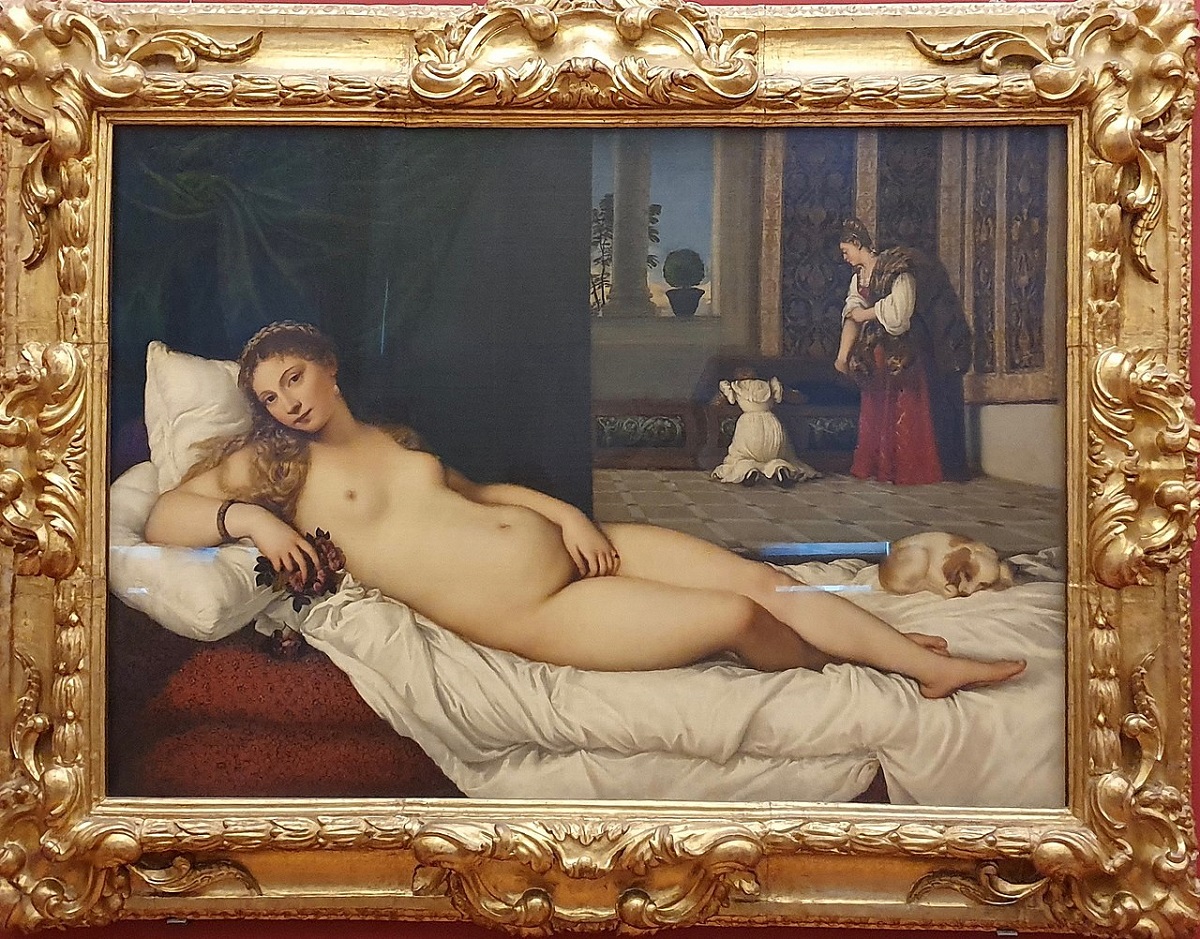
Judith Beheading Holofernes – Artemisia Gentileschi
In halls filled with masterpieces of male artists, you can finally catch a glimpse of the incredible works by Artemisia Gentileschi.
A 17th century-female painter, Artemisia stands out for her incredible pieces that have rich colors and shadows as well as strong imagery.
This painting in particular is notable for its intensity and violence, something not expected from a female painter. While this painting was met with controversy throughout history, it has become prevalent recently for its feminist themes.

The Uffizi’s Hidden Gems
With hundreds of works of art, you can be sure the Uffizi has much more than just the great classics you learned about at school. Here are some of our favorite hidden gems at the Uffizi gallery.
Head of Christ by an Unknown Tuscan Master
This work doesn’t stand out for its Renaissance mastery of depth and humanistic painting, making it often overlooked. But it truly is worth a stop for art history enthusiasts.
This early medieval work was ahead of its time. It stands out for the strong emotion of suffering shown on Christ’s face. Such emotion was often muted in art, which was meant to show an idealized world instead of reality. Showing this glimpse of pain on Christ’s body as he is crucified takes the viewer into the real world. This changed visitors’ relationship with art, something not seen again for many centuries.
Madonna with the Long Neck by Parmigianino
The name says it all; this is an interesting painting for its seemingly awkward proportions. Mary has quite a long, twisted neck and the Christ child has odd adult proportions. Yet somehow it all comes together beautifully.
This painting was considered quite innovative for its perspective of the body and spatial organization. While technically it might have been considered a mediocre painting, it shows that you don’t always have to follow the rules to create something magnificent.

Martyrdom of Saint Lawrence by Gian Lorenzo Bernini
Bernini is a sculptor you’ll meet frequently in Rome, but you won’t see much of it in Florence. This is a rare occasion to see one of his great works. This piece was created from one single block of the famous Carrara marble. What’s even more impressive? He made this piece when he was only 15 years old!
Bacchus by Caravaggio
We’ve already had a look at Caravaggio in the Uffizi, but with all the attention on his impressive Medusa shield, his work Bacchus is sometimes overlooked.
This painting is a bit calmer than most of Caravaggio’s works. It is a still-life portrait without the signature bold colors and shadows that made the artist famous. Yet, it is still worth a look and is quite interesting in the way Bacchus extends a glass of wine to invite viewers in.
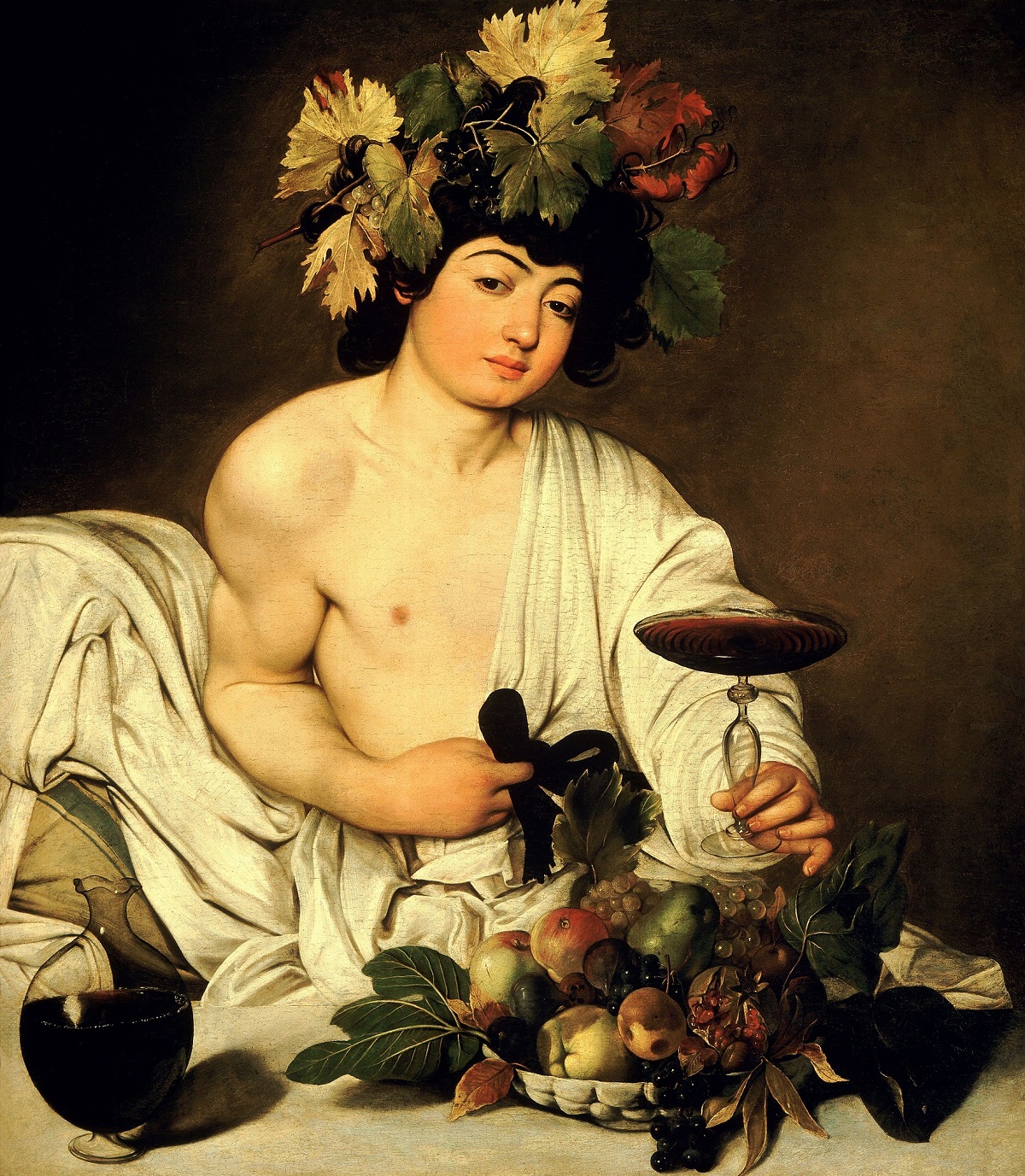
St. Augustine in His Study by Botticelli
The Birth of Venus is of course a showstopper, but Botticelli’s skill is seen even in his smaller works like his depiction of St. Augustine.
Rather than show the Saint absorbed in inspirational study, he is struggling to write. You can see the crumpled papers surrounding him, showing us that he is having a hard time penning his thoughts. It’s a problem we can all relate to.
Lamentation Drawing by Giovanni Bellini
The drawing of Lamentation, which also became a painting, is incredible for its depiction of human emotion. Bellini captures the faces of every character so well, showing us grief and worry for Christ who has passed.
While many versions of the Lamentation scene show us the big picture, zoomed out to see all figures, the positioning and size of this work includes us in it. Here, the viewer is invited to participate in the scene.
Short on Time? A 90-Minute Uffizi Gallery Guide
If you were to take a minute and admire every work within the Uffizi’s walls, your visit could take all day! But of course, if you are only in Florence for a few days, you might want to make the most of your visit, fitting in as much as you can.
In any case, it is possible to guide yourself through a quick tour of the Uffizi. Here is one we recommend for hitting the highlights. It should take you about an hour and a half, but of course, it will depend on how long you choose to view each masterpiece!

Start Here: the Second Floor
From the entrance, you will begin your visit on the second floor of the gallery. Head straight for Room A4 to dive into Florence’s art history.Here you will find many of the works of Giotto, an artist who bridged the end of the flat medieval period and began inching towards the depth of the Renaissance. If you find yourself intrigued at this early period of art, take some extra time to explore the next halls which highlight International Gothic, plus the Siena and Florentine art schools.
Your next stop is probably one you’ve been waiting for: the Botticelli rooms. A11 and A12 are dedicated to Botticelli, showcasing his large masterpieces such as Primavera and The Birth of Venus.
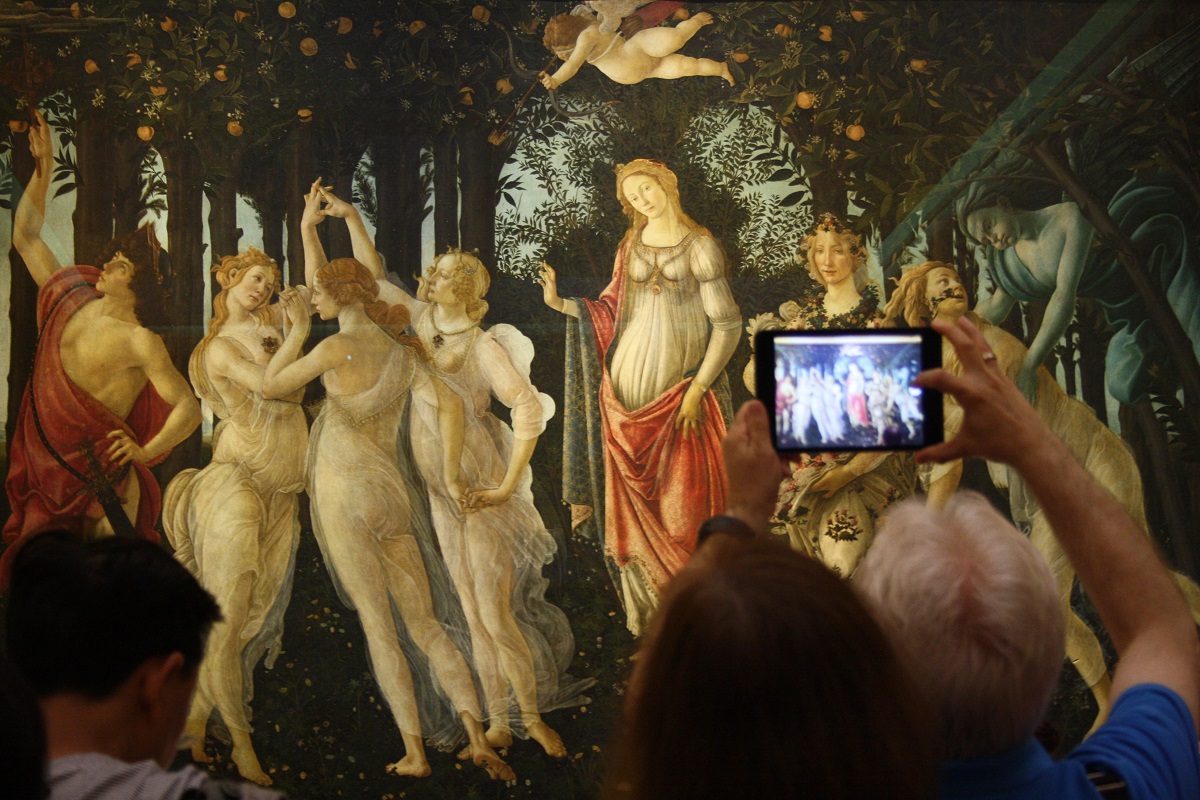
Then head down the Corridor to peek your head into the Tribune, a room famous for its curious octagonal shape. This room was part of the original Uffizi structure and was used to showcase the favorite High Renaissance works of the Medici family.Once you’ve had a peek, round the corner and head to rooms A35-A38. This is where you will find some more of the highlights we mentioned. These rooms are dedicated to Da Vinci, Michelangelo, and Raphael.
After that, you are about halfway done with this speedy version of the Uffizi tour, and it is time to head downstairs!
Next Up: the First Floor
On the first floor, the first place you should have a look is room D8, which is where the hidden gem of Parmigianino’s Madonna with the Long Neck is. Then it’s time to catch the Venus of Urbino in room D22.
D22 is off the main corridor and rather hidden in the back corner of the building. Be sure to consult the free visitor’s map, or you might miss it!
Then, the end is where you will want to take your time. Don’t miss rooms D29-D34, which is where you’ll be able to catch the works by Artemesia Gentileschi and Caravaggio. You’ll even have a little break from Florentine art with works by Rembrandt.
That concludes your quick look at the Uffizi, however, if you do ever get the chance, come back for a full day to take in every room. It’s well worth it.
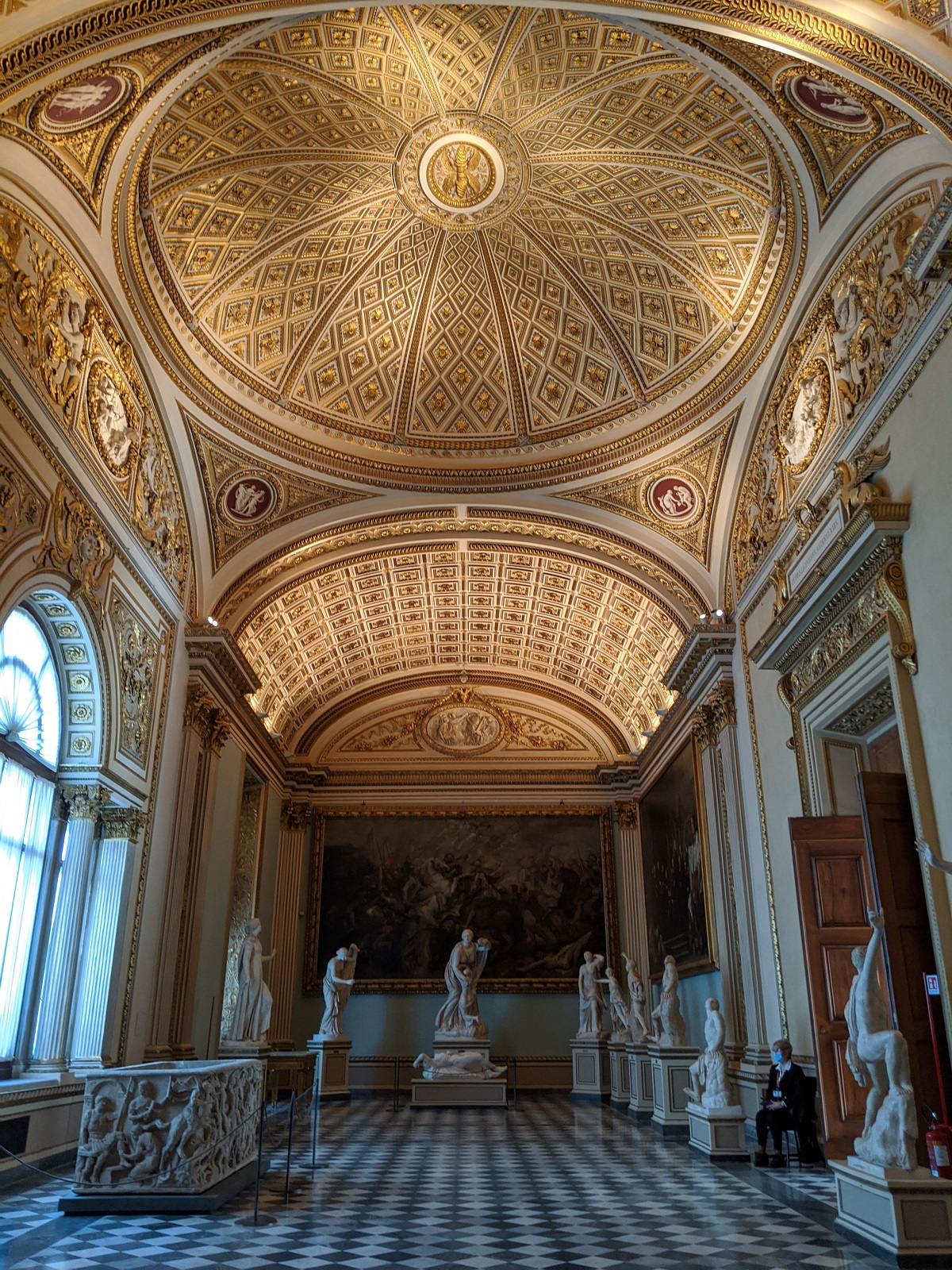
Visiting The Uffizi – Practical Information
Opening hours and prices
When planning your trip to the Uffizi Gallery, keep in mind that they are closed on Mondays. From Tuesday to Sunday, they are open from 8:15 AM to 6:30 PM, which gives you a full day to enjoy the museum.
Schedules can differ over the holidays, so keep an eye on their website for updates if you plan on visiting around Christmas, Easter, or August 15 (a national holiday in Italy).
Booking tickets in advance
If you want to reserve your entrance for a specific time slot, it will cost an extra 4€. It might be worth the extra cost, especially if you are visiting during peak season (June-early September). Lines form fast and long at the Uffizi, and without pre-booking, you could find yourself waiting for quite some time.
When booking online, make sure to go through the Uffizi’s official website so as not to be surprised by any extra fees.
Combination tickets to consider
Now, another thing to keep in mind is that the Uffizi organization is made up of more than just the Uffizi Gallery. If you are staying in Florence for a few days, you might want to grab a Passepartout combined ticket.
This ticket is valid for 5 days and gets you into:
- The Uffizi Gallery
- Pitti Palace
- Boboli Gardens
- Museum of the Opificio delle Pietre Dure
For your entrance to the Uffizi, you will need to choose your entry date and time, but for the others, you are free to stop by anytime.

Uffizi Gallery FAQ
Entrance and booking
Where can I book a ticket?
Tickets are available onsite at the Uffizi entrance, however, if you are visiting during peak season, it is highly recommended you book online in advance. Tickets can be purchased on the official Uffizi website.
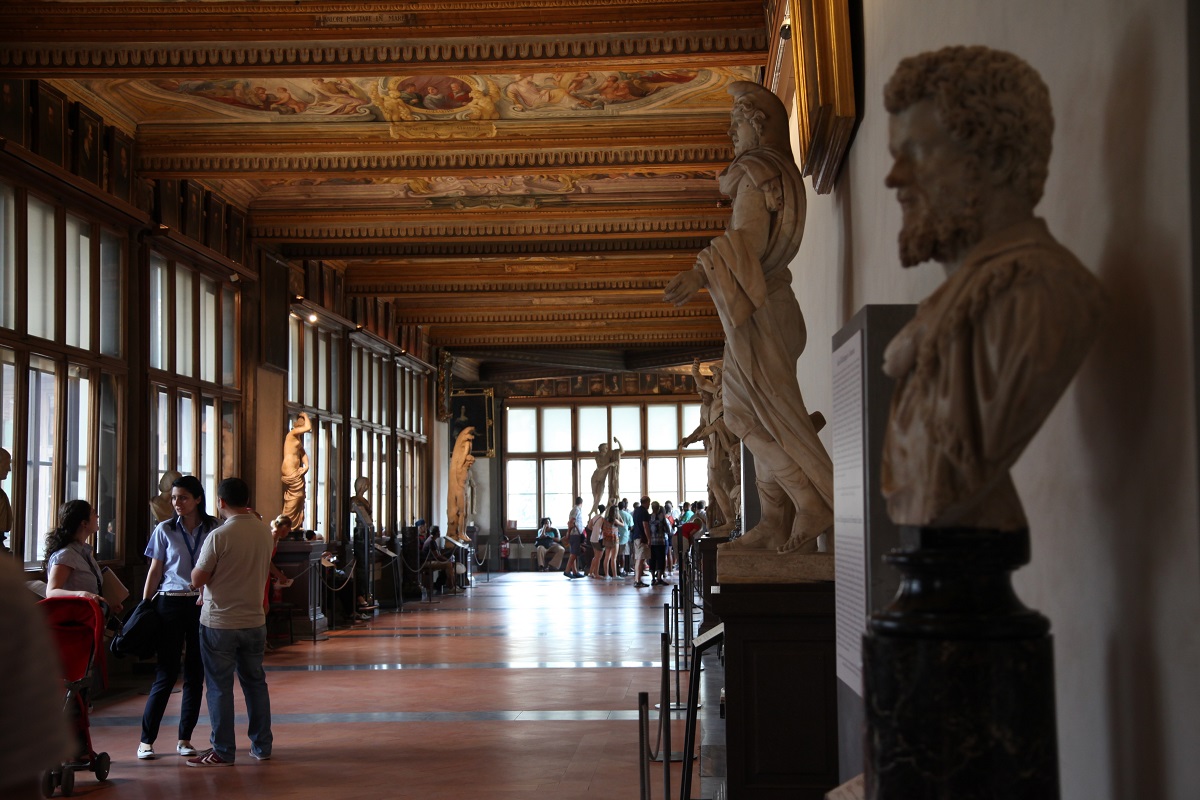
Guides, animals, and other planning
Do I need a guide?
The choice to get a guide is up to you. Many visitors prefer to go with the official audio guide, available at the entrance, or just with their own guidebooks. However, there are tours of the Uffizi available through third parties.
How long will a visit take?
Truthfully, a visit to the Uffizi could take you all day if you really take your time! There is plenty to see, so if you already know you are an art lover, block off a full day to explore. However, if you are in a bit of a rush, there are a few quick paths through the Uffizi to see the highlights.
We’ve outlined one of our recommended routes above. This should take you about 1.5 hours.
Are animals allowed?
Animals are not allowed with the expectation of guide dogs.
Eating around the Uffizi
Is there somewhere to eat in the Uffizi?
There is a cafe on the first-floor terrace. You won’t reach it until the end of your visit. Though you might be ready to head somewhere else for a bite to eat, the cafe is worth checking out for its wonderful view of the city.
There are plenty of great places nearby; check out our favorite restaurants near the Uffizi Gallery!
Want to see the Uffizi Gallery with an art historian?
Skip the line on our Uffizi Gallery Highlights tour! You’ll enjoy a curated tour of the Uffizi’s highlights in just 2 hours on a small-group tour.



